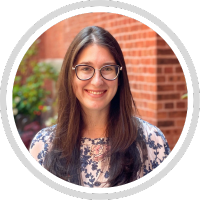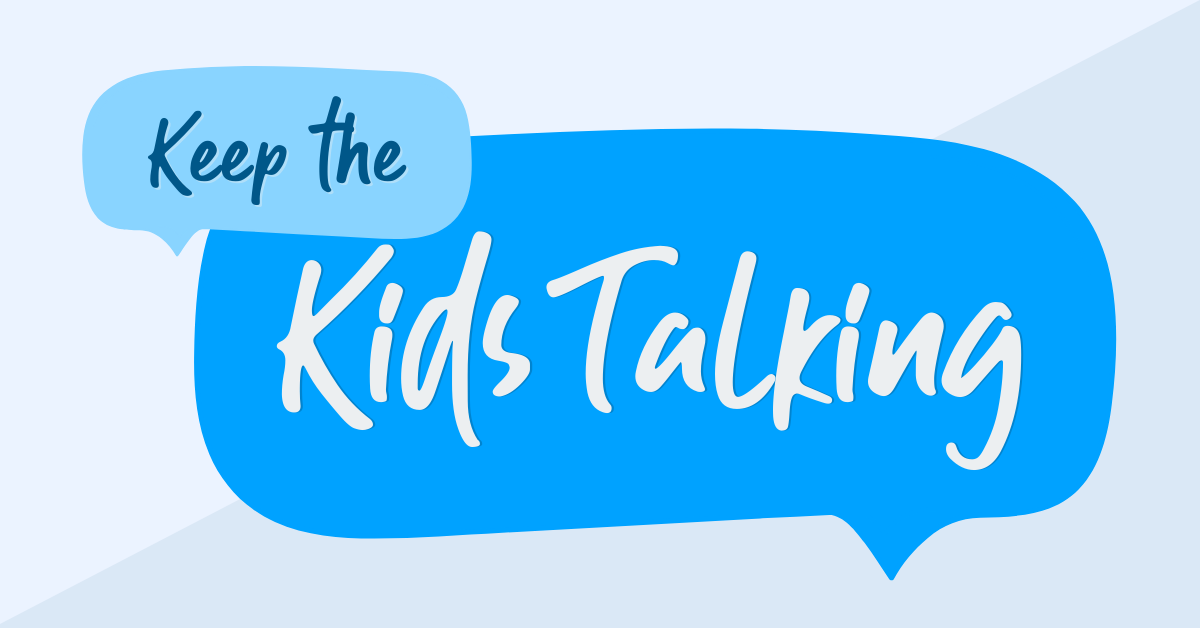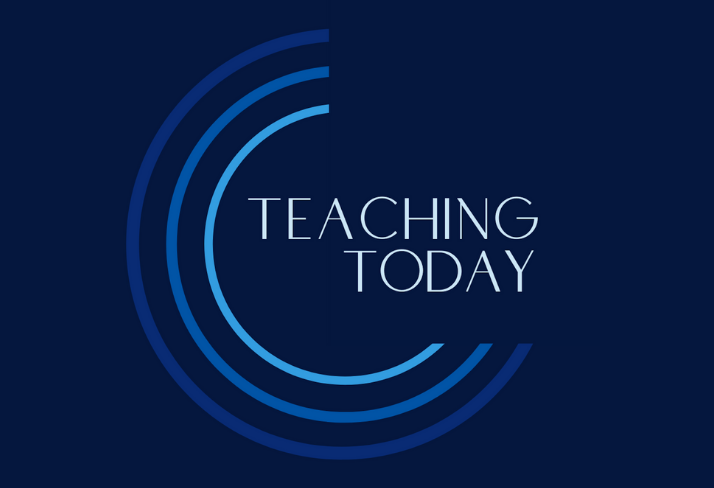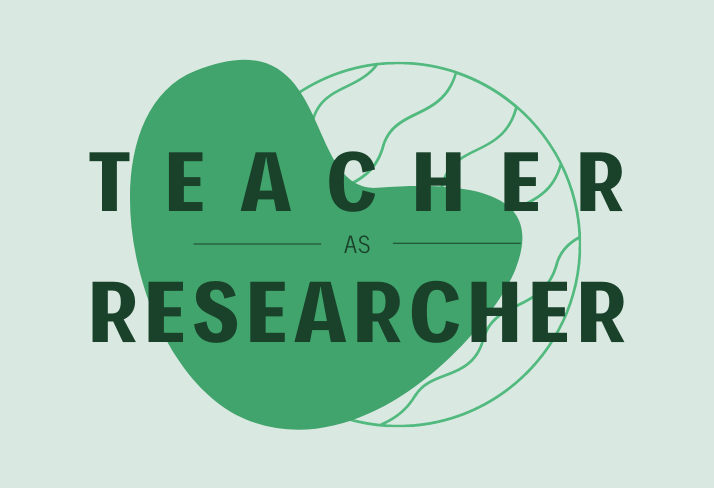|
Four ways to cultivate student connections through stories, personalities, and interests.
It’s the first few weeks of school. New students are entering our school’s hallways and sitting in our classrooms. Fresh paper, pencils, and (hopefully) charged computers are perched on desks. Awkward glances and shuffling feet and uncertain pauses fill the air. As teachers, we are faced with this challenge: how do we begin to build a learning community in our classroom, one that invites trusting dialogue and encourages intellectual curiosity?
I often received one, seemingly simple answer: “find a good icebreaker.” An icebreaker is an activity or engagement task designed to get people talking and learning about one another — in other words, a task to “break the ice” of social awkwardness. A fellow teacher in my school swore by “Would You Rather?” as the icebreaker that had withstood the test of time, asking students to answer a series of extreme either-or questions like, “Would you rather fight a bear or a shark, and why?” I don’t think there’s one best icebreaker for all students or for all teachers. It’s difficult to know definitively what will resonate with your particular students. With that said, I knew that it was possible to find an icebreaker that invited students to get to know each other in a meaningful, personal way. Below you’ll find four activities that will help you “break the ice” with your new students and begin creating genuine connections within your classroom community.
The Neighborhood Map
Discovering & Writing About a Memory This first activity, invites students to make a memory map of their childhood bedroom, apartment, house, or neighborhood. Then, it asks students to look for stories they can share, inspired by places marked on their map. The memory map was developed by Stephen Dunning in the early 1970s and later articulated in his book Getting the Knack (1992). His workshops led to other educators across the country creating various versions of this practice, including by members of the South Coast California Writing Project. Ask students to draw a birds-eye view map, then “walk” a partner or small group through descriptions of the places on their maps. After doing so, students number and label these “story places” on their maps and choose one story to write about further. Students are invited to share their written story in a partnership or in a small group. For younger students, I encourage using some sentence starters to scaffold the sharing process, such as “This place stays in my mind because…” or “The important thing about this story is…” A possible set of directions are included here and here, but I encourage you to develop directions that will work best for you and for your students. For those who may not feel comfortable drawing their own memory map, perhaps imaginative or fictional map drawing could accomplish a similar goal of learning about your students. If writing is a central component of your classroom, consider transforming this activity into a writing benchmark for your students at the beginning of the year to gain insight into their writing abilities. This activity can work in an elementary, middle, high school, college, or even adult-education setting, and is especially inclusive for English language learning students, given the opportunity to tell stories through drawn visuals.
The Cultural Tree
Getting to Know Yourself and Your Students In this activity, students are asked to create a “cultural tree” that represents their culture. Originally envisioned as part of Zaretta Hammond’s work in Culturally Responsive Teaching & the Brain, the drawing of cultural trees asks students to identify three levels of their culture: surface level — aspects of culture you can see like food and dress, shallow culture — aspects less explicit, like concepts of eye contact and personal space, and deep culture — unconscious beliefs and norms like concepts of fairness and spirituality. My colleague at CPET, Lauren Midgette, has used Hammond’s work to write and to reflect on the possibilities it has for getting to know students, but also ourselves, better in the classroom this school year. Midgette makes the point that the drawing of cultural trees — and the discussions inspired by them — provides a healthy soil to help our students grow. Each level of culture — surface, shallow, and deep — is visualized on the tree as leaves, trunk, and roots, respectively. For younger students, I don’t think the framing of the tree as “cultural” is necessary for the activity to be an effective tool for discussion. Students could certainly label a tree with aspects of who they are that are surface (easily seen by others), shallow (not as easily seen), or deep (entirely unseen).
Telling a Story Through An Object
This third activity requires slightly more teacher preparation than the first two, but is one that I have found particularly effective with students of all ages. I created the directions to facilitate this activity — linked here, but the premise was inspired by fellow educators: objects, even the most simple ones, are imbued with our stories. First, find an ordinary cardboard box. Label it “mystery box.” Next, fix it with a bunch of objects — they can be commonplace things like birthday candles, hair ties, or chewing gum — or more particular objects, like sports paraphernalia or local fruits and vegetables. Lastly, close it and place it in a very visible place in the classroom and say nothing about it to your students until you begin class. Explain to students that inside the box are a bunch of objects that you will pull out one at a time. As soon as students see an object that reminds them of a story, memory, or experience, encourage them to start writing that story. The final thing that I pull out of the box is a slip of paper that says, “the object that you were hoping I was going to pull out.” It’s a catch-all invitation for students to write about an object close to their heart that you may not have been able to acquire. Invite students to share their stories with one another after they have written them. In my facilitation of this activity, I found that students often worried that their story wouldn’t be “good” or “significant” enough. I explicitly invite ordinary stories from students, which have never been “ordinary,” but rather extraordinary insights into the students and their backgrounds and interests. As the year progresses, I invite you to experiment with this activity in the reverse: invite students to bring in their own meaningful objects that have a personal story attached to them to add to a classroom box. They can share their objects and stories before placing them into the box.
Beginning With A Two Sentence Story
The fourth icebreaker requires no teacher preparation and the prompt for students is incredibly simple: write the beginning of a two-sentence story from your day today. This activity, as well as these questions, were introduced to me by Professor Ruth Vinz at Teachers College, Columbia University. Invite students to write in the present tense as a means to place themselves back in the moment they are writing about. Remind students that the purpose is not to assess their writing skills, nor to write the most significant story possible. The story starter can be simple, so long as it is about some event from their day. This icebreaker would work especially well for an afternoon class. Alternatively, the prompt could be modified to read, “write the beginning of a two-sentence story from your day yesterday. Even though the story happened yesterday, please write in the present tense, as though you are living the story at this very moment.” After writing their two sentences, invite all students to read them aloud in no particular order and without any further explanation. Next, invite students to consider how their stories might be threaded or connected together. Consider these facilitation questions:
Dive a Little Deeper Under the Ice
Icebreakers can be wonderful ways to start connecting with new students — they alleviate nerves and provide an entry point for relationship building. This year, I invite you to not only “break the ice,” but also to dive a little deeper under the surface, creating ways for students to connect in genuine ways through their stories, personalities, and interests. Please modify these activities — they are intended to be transformed for you and your classroom. And the best part? These activities can be used at any point in time to learn something new about your students.
One district's success with teacher-led passion projects.
COURTNEY BROWN
Senior Professional Development Advisor
When teachers are given space to imagine possibilities for their schools and students, time to refine their ideas, and the support necessary to implement new projects, what can they achieve?
Since 2017, we’ve been tackling this question through our collaboration with the North Plainfield, NJ district. In response to a statewide initiative to develop teacher leaders, the district leaders at North Plainfield tapped us to support this development process alongside the implementation of teacher-led passion projects across the district. These passion projects allowed teachers to identify and respond to district-wide issues, while gaining experience in initiating and executing district-wide improvements. To meet this complex goal, we designed our professional development as an inquiry cycle for teachers based on their interests and passions, while simultaneously studying adult learning theory. Using this model, participating teachers developed an action plan for implementing a passion project alongside an exploration of what it means to lead other adults through the role of a teacher leader. When designing projects with these types of goals, it’s important to focus on the foundational elements of adult learning theory, providing purposeful, practical, and empowering experiences that are directly related to teachers’ roles and responsibilities. Through meaningful experiences and discussions, we can provide opportunities to learn facilitation skills, explore action planning, and implement an extended inquiry process. Equally important in the design phase is the alignment with New Jersey State Standards and district-level goals. With this in mind, we can customize our professional development as needs evolve from year to year and project to project. The key is to focus on creating safe spaces for teacher leaders as they explore, practice, and reflect on their experiences.
How do you build teacher leaders?
As we begin working with teacher leaders, we make a commitment to read and share the unique elements of adult learning theory. Through training and experience, teacher leaders are well-equipped to plan and present instruction to children, but working with adults is different, and even the best teachers benefit from deepening their understanding of adult learning theory. With North Plainfield, we encouraged teachers to explore their own learning and leadership styles, and dedicated time for teachers to reflect on situations when they were nurtured by a leader, and what moves those leaders made to create a positive and productive environment. Alongside articles such as Pillars for Adult Learning, we asked teachers to identify their own learning styles within Ellie Drago Severson’s framework of ways of knowing, using a Four Corners protocol. Giving teachers time to explore who they are as leaders, teachers, and all of the identities they bring to their school allowed them to reimagine themselves as learners. We can (and should!) be both leaders and learners at the same time! In addition to exposing teacher leaders to adult learning theories, we infused literacy practices into our workshops so teachers could use them in their own classrooms. As we read excerpts from Malcolm Knowles’ articles on adult learning, and utilized a text rendering protocol as a model, we demonstrated how to pull key ideas from a text in a concise and collaborative way. Most importantly, we want our teacher leaders to understand that unlike teaching children, “Adults...tend to have a perspective of immediacy of application toward most of their learning. They engage in learning largely in response to pressures they feel from their current life situation” (Knowles). Using this concept as a guide, we recommend that teachers reflect on their own perceptions of positive leadership, as well as how they can directly apply these tangible qualities to their own work.
Starting and supporting a passion project
In his book Drive, Daniel Pink describes how motivation is developed through the combination of autonomy, opportunities for mastery, and a driving purpose. With our North Plainfield team — after establishing that as adult learners we all learn and process our learning in different capacities — it seemed only natural that we create space for teacher leaders to consider the issues they were passionate about and ways they might use their passions to enrich their school community. For their passion projects to be successful, we needed three critical components: Community of practice Before starting any training for teacher leaders — especially across a district, with teachers who may not usually work together — it is crucial to develop a safe space where participants feel supported and heard. Participants need to be willing to take risks, and also pilot, revise, and push restart on their plans. To help develop a community of practice, we used reflection and sharing strategies such as our Success and Dilemma protocol and A Picture Tells the Story. Administrator involvement We worked closely with North Plainfield’s administrators, who helped teachers with logistical questions and concerns throughout the year. The district is spread out across several schools, and when a group of teacher leaders was planning on implementing a committee to oversee functions and events that would create school spirit, the administrators were able to suggest teachers from other schools who might also be interested in joining this committee. As a result, district-wide events such as a reinvigorated pep rally and an evening fitness event for parents and students were created. This concept can be replicated in any school district where the administrators are a part of the professional learning. As outsiders to the school, we do not have the privilege to know all of the teachers in a district; this is where having engaged and supportive administration is crucial for bridging the gap between professional learning and teachers, particularly when the professional learning is designed to highlight teachers’ passions. Actionable goals Allow teachers time and space to brainstorm their passion projects, and use meeting time to plan them with actionable goals in mind. Dr. Roberta Lenger Kang's Strategic Planning for School Change article guided this idea as we worked to incorporate modified design thinking components for small groups into our time with North Plainfield, and as teachers developed individual and collaborative action plans. Approaching this process by first testing a plan and then piloting, tinkering, and iterating is a cycle that can be replicated by any school district — provided that everyone involved feels safe to take risks and fail forward.
What changes are being made in communities?
Teacher leaders are implementing so many wonderful passion projects in North Plainfield. Their projects are rooted in their passions, and their passions stemmed from improvements they wanted to make in their school community. In challenging areas, teachers saw new opportunities. Here are just a few examples:
Capitalizing on the passions of educators can spark change within a school community, and can empower teachers to take on new leadership opportunities. Allowing teachers space to dream, and investing in their learning creates a powerful pathway for authentic, teacher-driven change within a school district. When teachers are empowered to take on new roles and address real concerns, the possibilities for positive change are limitless.
Connections enhance our ability to build relationships, work toward resolving tensions, and communicate with compassion.
The first segment of every workshop, conference, or institute we lead always begins with reflection. Whether we’re engaging in a protocol, a free share, or a conversation starter, we like to take a moment at the beginning of our learning experiences to stop, pause, reflect, and to find ourselves in the moment so we can be fully present.
At our last Chancellor’s Day event, Inspire, we offered four reflection-based workshops that focused on the day’s theme: see and be seen. These workshops invite educators to reflect on a connection they want to deepen — connection to self, connection to students, connection to colleagues, or connection to communities. Within this framework, educators have the opportunity to explore practical instructional strategies that can be used for students and adults.
Connecting to self
What are your core values? When have you been the happiest, the most proud, the most satisfied? Using this article from Mindtools as a reference, you can investigate patterns and trends in your life — patterns that may reveal who you are at your core. Identify your values, then prioritize them. What’s more important to you — accuracy or efficiency? Honesty or peace? Community or independence? This process of identification and prioritization helps you drill down to the values that drive your work, personality, and passions.
Connecting to students
The more experience we gain as educators, the farther apart we are in age from our students. Generational differences, cultural differences, stylistic differences, and even language differences can separate us from truly connecting. It’s valuable to take a moment to question the assumptions we have about our students, and to resist allowing stereotypes or cultural differences to define them. Once we can articulate ways in which we see students, we can begin to critically reflect on these understandings and how they might limit our perceptions of who are students are, and of who they could become. This insight gives us the purpose and the motivation needed to push into our classrooms with a clear intention to find more points of connection with our kids.
Connecting to colleagues
One of the biggest changes in schools over the last decade is a focus on teacher collaboration. From teacher teams to co-teaching, teacher-to-teacher collaboration is at an all-time high. But increased collaboration also creates space for increased tensions, miscommunications, and misunderstandings between colleagues. Dealing with these dynamics while also teaching a class is extremely difficult. That’s why it’s important to build empathy and understanding. Repurposing a high-leverage instructional strategy, the Body Biography, allows us to better empathize with our fellow educators. The Body Biography allows us to use different parts of a body to represent different aspects of a personality or different actions — what we write in the mind communicates what a person is thinking, what we write in the hand communicates what they’re doing, and so on. By using the Body Biography as a tool for understanding our colleagues, we begin to see people from multiple perspectives — and blank areas will reveal key characteristics that we may not know about the people who are working alongside us every day.
Connecting with community
New York City has many diverse and unique communities. The more we connect with the community we’re teaching in, the better equipped we are to build relationships with our students, parents, and the neighborhoods in which we’re working. We can start by making connections between our communities and their narratives. Draw a map of your school community. Annotate it to illustrate the people who live within the community, and the stories they have to tell. How would these stories differ if told from a person who exists outside of the community? The differences between these two narratives will help us to better understand the lived experiences of our students and their families, and be more aware when our experiences differ. These realizations can also help us to be more mindful and intentional in how we tell stories about our community to others.
Each of these reflective activities helps us to make connections between ourselves and others. It takes vulnerability and bravery to walk into these spaces, to confront stereotypes, and to reflect and revise our practices. But the benefits are worth the risks. These connections enhance our ability to build relationships, work toward resolving tensions, and communicate with compassion.
Teaching is a labor of love, but the love does always balance out the labor.
My understanding of what it means to be a teacher was reinforced by how the media portrays teachers in film. I wanted to be Michelle Pfeiffer, winning over the “dangerous minds,” or Robin Williams inspiring the overachievers with his progressive ways, or Morgan Freeman pushing the students to do the right thing, or Edward James Almos challenging his students to step up and become the academics they were. Each of these portrayals, all based on true stories, tells the tale of a teacher who gave everything they had to their students — and within two short hours, saved the day.
In reality, my teaching experience feels more like a dark comedy than a feel-good hero story. Teaching is a labor of love, but the love does always balance out the labor. At the end of the day, when our patience is out the window, and things keep piling on, we have to figure out what it means to be a teacher, a parent, a social worker, and a nurse, all at the same time. Teachers often find themselves wondering, is this what burnout feels like?
Emotional labor
Recent research has investigated the silent toll that those in caretaking roles, such as teachers, face. They call the phenomena emotional labor. Former teacher turned journalist Emily Kaplan says, “Teaching is all about reaching clear to the heart of another human being and using everything you’ve got to make a difference. It’s calming kids when they’ve had a rough recess, celebrating when they lose their first tooth, absorbing their struggles and their traumas, channeling their joy and investing the currency of your own emotions in an effort to help them grow." It’s the opposite of what we’re supposed to do on the airplane — we’re putting the oxygen mask on everyone else before we put it on ourselves. Researchers highlight that when society inevitably fails to provide students with what they need, teachers feel “personal and professional guilt, which they must suppress for the broader good. Emotional labor begets more emotional labor.” And this challenge is compounded even more because the only power we really have in the system is in the confines of our classroom. Educators feel pressed down and overwhelmed by systemic obstacles with no clear path forward. So where does that leave us? Brene Brown might suggest that it leaves us feeling disconnected and isolated. It leaves us searching for connection. Connection, Brene says, is "the energy that exists between people when they feel seen, heard, and valued.” Connection creates energy. When isolated and disconnected we feel tired, lonely, and potentially depressed. But opportunities for connection create energy between people. Within that space, we can “give and receive without judgment; and derive sustenance and strength from the relationship."
Connection as an antidote to emotional labor
So that begs the question — what makes you feel seen? We can come to some agreement that there are three simple ways we can see and be seen. The first is simply, to listen. David Augsburger says that “being listened to is so close to being loved, that most people cannot tell the difference.” Listening feels like love. How can we listen more intently? Who do you need to listen to you? Who do you need to listen to? Second is to reflect. To reflect is to go back, to see again. When we reflect what we’ve heard to someone who is sharing with us, we demonstrate that we see their perspective, even if it’s different than our own. If 100 people shared what each of them saw in a Rorschach test, for example, we’d get 100 different answers. Everything from a puppy to an ice queen to muddy footprints. When we are reflecting what we’ve heard, however, we don’t need to rush to share our own opinion, or how we perceived the situation, or give tips about how others can see what we see. All we need to do is reflect what we understand their perspective to be. Here we seek first to understand, and then to be understood. And finally, we want to acknowledge, in one way or another, that no one is in this alone. You are not alone. You may be teaching by yourself. You may be grading papers on your own. But you are not alone. A community of educators has a deep bench, and we are here to connect with you, to acknowledge your experience, and reflect on your experiences. This is empathy. And Brene Brown reminds us of the power of empathy, noting that when we express or open ourselves up to feel another person’s feelings, we are we are saying, “I know what it’s like, and you are not alone.” We know what it’s like. And we see you.
How to step back, look, and listen to see where communities may be forming or where we can invite them to form.
When designing professional development projects, we’re constantly examining how our promising practices can be solidified as we support educators. Through this examination, we’ve come to identify five principles of practice: Communities of practice, Contextualized practice, Critical reflection, Cultivating strengths, and Cycles of inquiry. As part of our series investigating each of these principles, let’s dig deeper into communities of practice. (You can see previous entries in this series here.)
Identifying members of your community with an interest in professional development can be a first step in building an internal coaching structure within your school, and if you’re already humming along with a teacher coaching practice, looping back to some basics can help you identify additional teachers to invite into a growing community of practice.
“Communities of practice are formed by people who engage in a process of collective learning in a shared domain of human endeavor: a tribe learning to survive, a band of artists seeking new forms of expression, a group of engineers working on similar problems, a clique of pupils defining their identity in the school, a network of surgeons exploring novel techniques, a gathering of first-time managers helping each other cope. In a nutshell: communities of practice are groups of people who share a concern or a passion for something they do and learn how to do it better as they interact regularly.”
Step back
We often become so familiar with our own school and colleagues that we miss a new or forming interest — especially when it’s late in the school year and we’re sure we know everyone well enough to ascertain who is interested in receiving or leading PD and who isn’t. However, if we step back, we may see something new. At the next grade level team meeting, take a breath and look around as if it were the beginning of the school year. During your next staff meeting, imagine the people around you have changed over the school year (they probably have) and look and listen for new evidence of the desire to grow professionally. Look Take a look over a list of your staff and identify which teachers have tried something new in their classroom. What might happen if you invite them to share with one other teacher, in their department, or with the larger community? Where do you see teachers gathering in pairs or small groups? Do they share a common interest that could translate into professional learning? For instance, back when the first Harry Potter book came out, teachers reading the book decided to gather together to form a book club that spent the first half hour talking about their own experience of the book and the second half talking about how they could spark their own student’s imagination through creative writing prompts. Look around. Where might professional learning groups be a logical next step to what is already happening? Listen Perhaps it’s more likely in your situation that teachers aren’t forming their own learning groups naturally. Take a moment instead to listen for the needs you hear being voiced. Do you hear struggles in the form of complaints? There’s not enough time. / How am I supposed to fit [this] in? / I’ve tried everything with [this kid]! What teacher do you know who has struggled through this same problem in the past? Consider asking the teacher who overcame the struggle to invite the teacher in the midst of the struggle to problem-solve together. Listen to the whole staff: do you have results from any recent survey you can dip back into for a sense of the needs across your team? Identify several needs and offer a problem of practice protocol in your next email to staff or invite teachers to form small groups that engage with a protocol to address their concerns. Maybe it’s time for a new survey focused on asking questions directly about PD needs and especially about the interest of teachers to collaborate and learn from one another. It’s a great time to listen for needs that you want to meet over the summer and going into 2019-20.
The reality is that communities of practice are everywhere. Sometimes we can see them clearly and other times we need to step back, look, and listen to see where they may be forming or where we can invite them to form between folks who don’t realize that just across the hall is someone else with the same interest or struggle. Wagner describes it like this:
[Communities of practice] are a familiar experience, so familiar perhaps that it often escapes our attention. Yet when it is given a name and brought into focus, it becomes a perspective that can help us understand our world better. In particular, it allows us to see past more obvious formal structures such as organizations, classrooms, or nations, and perceive the structures defined by engagement in practice and the informal learning that comes with it. |
|
The Center for Professional Education of Teachers (CPET) at Teachers College, Columbia University is committed to making excellent and equitable education accessible worldwide. CPET unites theory and practice to promote transformational change. We design innovative projects, cultivate sustainable partnerships, and conduct research through direct and online services to youth and educators. Grounded in adult learning theories, our six core principles structure our customized approach and expand the capacities of educators around the world.
|
ABOUT US
525 West 120th Street, Box 182 New York, NY 10027 416 Zankel Ph: (212) 678-3161 [email protected] Our Team Career Opportunities |
RESOURCES
Professional Articles Ready-to-Use Resources Teaching Today Podcast Upcoming PD Opportunities |
COACHING SERVICES
Custom Coaching Global Learning Alliance Literacy Unbound New Teacher Network Student Press Initiative |


































